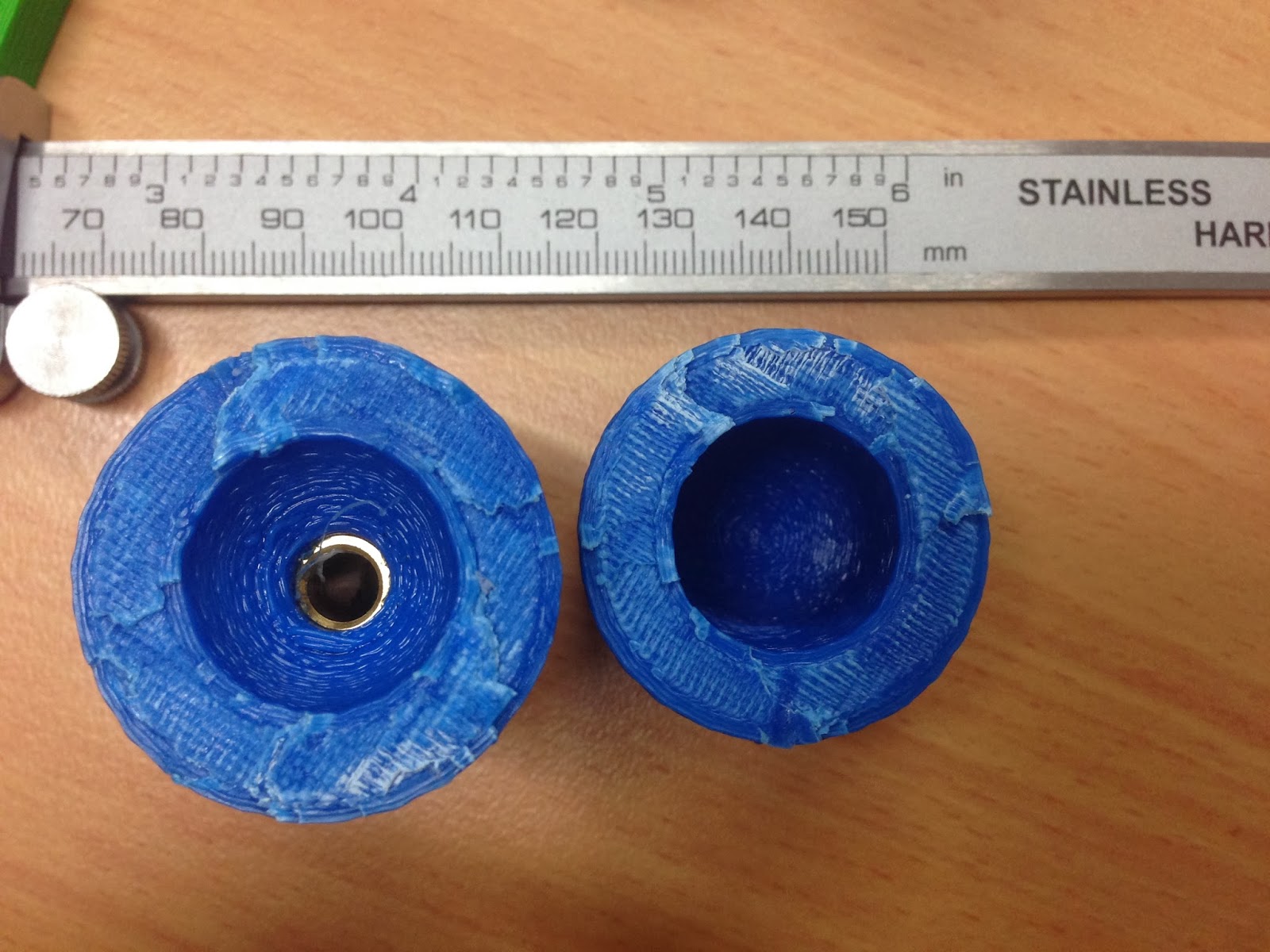The treated vessel burst fractured into two halves at 2700PSI. The untreated vessel had a small crack in the same spot as the treated one at around 2100. Unfortunately I forgot to press record on the gauge camera for the second test so I dont know the exact pressure but it was >2100. It is encouraging that both fractured at the same spot. I was happy that the untreated vessel did not leak, since my early tests with the other 3D printed seem to suggest that sealing was hard. It seems like compaction is the key.
I split the untreated vessel by hand so I could see what the fracture looked like. Its really cool how the plastic turns white where it's stressed. It seems like the stress in the plastic was around 22MPa. This is around %50 of ABS's UTS which seems a bit high. Might have to brush up on my thick walled pressure vessel theory. The fracture patterns are interesting.... not exactly sure what they mean. It's probably significant that Might also have to brush up on my fracture mechanics.....
I am really excited that simply drilling and tapping the port is enough. I was not looking forward to gluing each fitting in. Seeming as not treating the prints with acetone works I think thats the direction we want to head in. The less post processing the better.
We've ordered most of what we need to build a tensile tester. I spent a few hours in a hardware store on saturday taking apart a pressure washer, trying to figure our how to couple to it. I can get fittings online but am impatient. I put it back together only to realise (after getting back to the office) I forgot to tighten one of the high pressure threads. I decided to go back and tighten it which took another long time as I didn't want someone to get hurt when they used it. I have a bunch more to write about, more to come....













